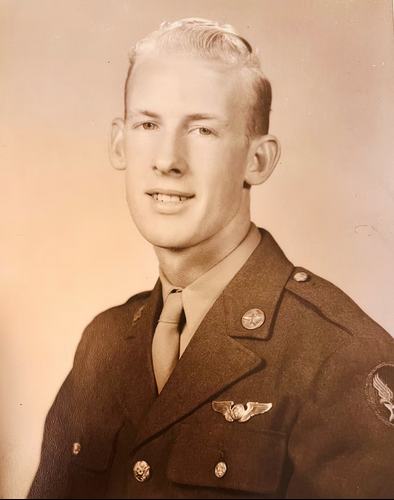Missing Eastern Iowa WWII Airman’s remains to be brought home this month for burial
June 10th, 2025 by Ric Hanson
IOWA FALLS, Iowa [KCCI] — A U.S. Army airman from Iowa Falls killed during World War II will soon be brought back to his hometown. Cpl. Melvin Huff was reported missing in January 1945 after friendly forces lost contact with his bomber. He was 19 at the time.

CPL. Melvin Huff
Huff’s remains were discovered in Papua New Guinea in 2011. They were retrieved by an underwater recovery team a few years later. Last year, his family learned he had been identified. Huff’s remains will be brought back to Iowa Falls later this month, on June 24, by military escort. A burial is planned for June 28.
In January 1945, Huff was assigned to 360th Service Group, Combat Replacement Training Center, Far East Air Force, and deployed in present day Papua New Guinea. As part of an attempt to neutralize the Japanese threat near Wewak, Territory of New Guinea, Huff’s unit attacked enemy defensive positions on nearby Cape Wom. Huff, an arial gunner, was reported as missing in action on Jan. 20, when friendly forces lost contact with the A-20G Havoc bomber he was aboard.
Following the war, the American Graves Registration Service (AGRS), the military unit responsible for investigating and recovering missing American personnel in the Pacific Theater, conducted exhaustive searches of battle areas and crash sites in New Guinea, concluding their search in late 1948. In June 1949, a board of AGRS officials concluded they were unable to locate any remains of Huff and the other two crew members. They were designated as non-recoverable.
DPAA predecessor organizations began researching and recovering service members from Papua New Guinea in the early 1980s. In December 2011, an Australian Defence Force officer reported seeing an aircraft crash site in a swap near Cape Wom, East Sepik Province, Papua New Guinea. A local guide from the nearby Wom Village had discovered the site roughly six months prior and stated human remains had been seen in the crash. Between July 2015 and May 2016, DPAA personnel interviewed locals, collected crash materials and various life support items, and collected possible osseous remains. In late 2022, a DPAA Underwater Recovery Team conducted operations at the site, and recovered possible human remains, material evidence, and other life support equipment. The remains were sent to the DPAA Laboratory for review and analysis.
To identify Huff’s remains, scientists from DPAA used dental and anthropological analysis, as well as material and circumstantial evidence.
Huff’s name is recorded on the Walls of the Missing at the Manila American Cemetery and Memorial, along with others still missing from WWII. A rosette will be placed next to his name to indicate he has been accounted for.


